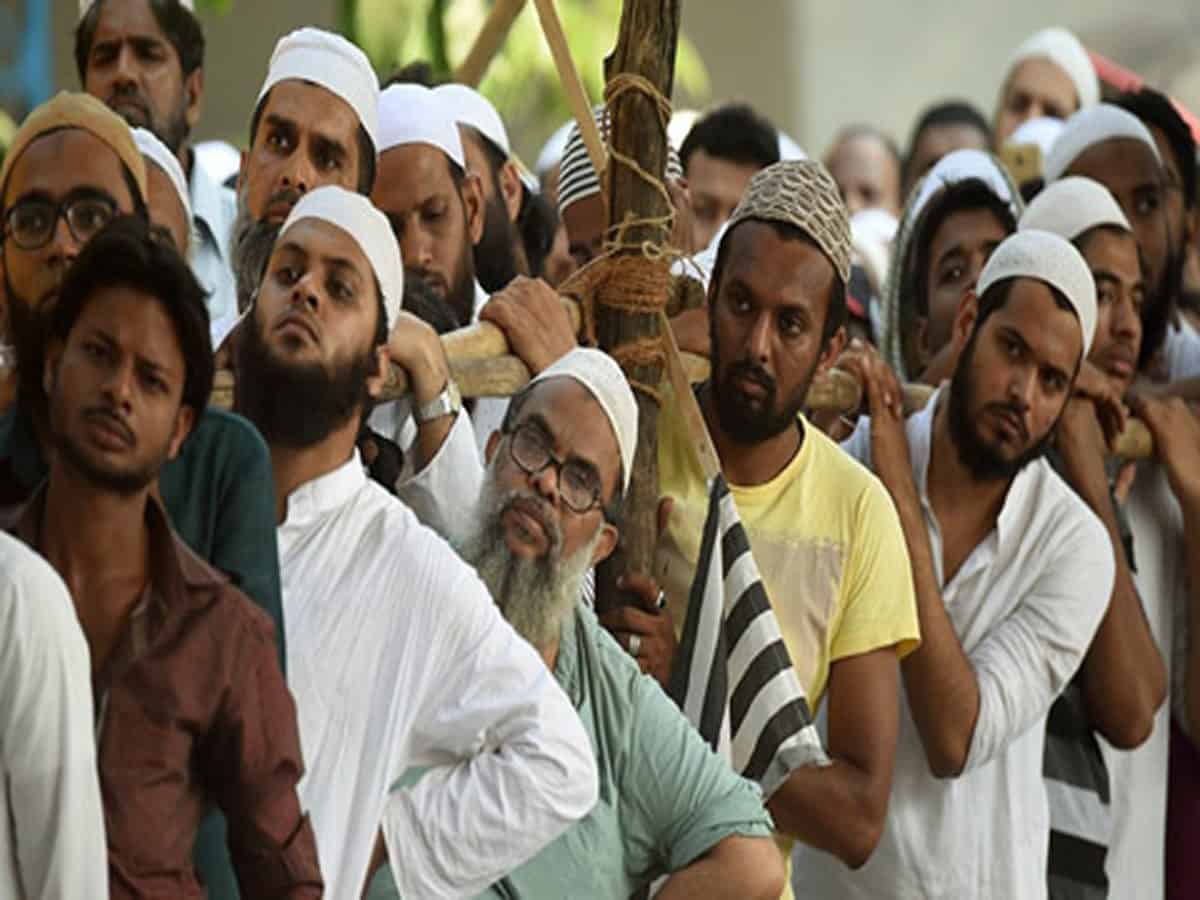By Mohammad Muqaddas Hussain
Srinagar: Between this year’s Tanishq and last year’s Surf Excel ad controversies, a lot more happened. Examples of “in-your-face” Islamophobia galore. Remember that cock and bull story of UPSC jehad? That loathsome soap opera of Sudarshan News? It was when gonzo journalism touched its nadirs.
Dr. Syed Zafar Mahmood
There was one man though who maintained grace and poise amidst all cacophony, notwithstanding the fact that his name was being constantly dragged into the mud: Dr. Syed Zafar Mahmood, the founder of organisations like Zakat Foundation of India, Interfaith Coalition for Peace, God’s Grace institutions and Iqbal Academy India.
Dr. Mahmood was an officer of the Indian Revenue Services before resigning from his job as Chief Commissioner, and devoting himself to the larger social cause of educating and empowering weaker sections, including Muslims, in India.
Dr. Mahmood wrote a book (published last year) titled Consciousness of 21st Century: Indian Muslim Renaissance, which remains quite relevant at a time when caricaturing Muslims has become a rewarding politico-economic project, and when hate, contempt and bigotry seem to be tearing the social fabric apart (recall the Tablighi Jamaat incident).
This book doesn’t come with jargon or intellectual sophistry. It is a collection of writings which delineate the ‘lowest common denominator’ issues facing Muslims in India, and offers certain suggestions as well. It is not polemical, neither does it propose a revolution. It reposes faith in Indian democracy, yet it laments the lack of will on part of the Indian political elite towards the Muslim cause. Thus it comes out to be didactic as well as admonitory.
Justice Rajindar Sachar Committee
Dr. Mahmood, being a member of Justice Rajindar Sachar Committee (2006), invokes the committee’s observations and recommendations throughout the book. He also occasionally mentions the findings and suggestions of Justice Ranganath Mishra Commission Report (2008). The 2011 report titled Promises to Keep by Harsh Mandar, which was rejected by the UPA government on grounds of minor statistical inaccuracy, is rightly included in the book as well.
The book has a foreword written by Justice Rajindar Sachar. The legal luminary acknowledges that the recommendations of the committee he headed were not duly considered by the UPA government. According to him “faith and confidence of the minority in equal and just treatment by the majority is the acid test of a civilized state”. This is a powerful statement, a reminder as well as an injunction.
Dr. Mahmood discusses a plethora of topics in the book. These can be classified into observations, concerns and proposals/recommendations. First, the observations. Starting with the role of the Congress. The Party had monopolized all the tricks of the political trade including superficially courting the Muslims, while “it only mentored a few Muslim individuals and families”. “The Sangh Parivar has been adopting the policy of blaming the Congress for appeasing Muslims because it didn’t find another anti-Congress rallying point having potential of winning the election”. Now BJP with its paraphernalia is going out of the way. There is RSSisation of institutions and pedagogy, and a “saffron-oriented kaleidoscopic change” seems inevitable. Terrorism problem is being unjustifiably linked with Muslim problem and there is a deliberate “Islamization of fundamentalism” happening.
UCC, Triple Talaq, CAA
Second, the concerns. Issues are being cherry-picked to suit agendas. Uniform Civil Code (one of the last priorities of the Constitution), Triple Talaq, CAA etc. are being highlighted via pretentious moralistic posturing while large scale encroachment of Wakf properties by the state itself and Rohingya humanitarian crisis are being sidelined (If India is not a “Dharmshala” then why CAA?). There have been attacks on Churches and Mosques, ludicrous coinages like Love Jehad and Ghar Wapsi floated, mob-lynching and madrasa-shaming.
The issue of beard in police-force and army has also been written about by the author, posing a question, “Should State favour Sikh beard, disapproving Jewish, Christian and Muslim beards?”. Dr. Mahmood seems rightly concerned about Bombay Municipal Corporation making Surya Namaskar compulsory in its 1200 schools, toxic prime time debates and how fiduciary allegiance of TV channels is being exploited. The under-representation of Muslims in government and bureaucracy (less than 3%, despite constituting around 15% of the Indian population) has been deliberated upon in detail by the author. An interesting fact comes to fore that how ingeniously those constituencies where Muslims are in majority have been kept reserved for SC/ST candidates–gerrymandering of sorts!
Third, the recommendations and suggestions. The author calls for the following steps to be taken: proper delimitation, alternative admission criteria, setting up of Indian Wakf Service, considering RBI’s proposal of allowing banks to have a window for interest-free banking, safeguarding minority character of Aligarh Muslim University, Rs 50 lakh compensation for any person falsely implicated in terror acts, appointment of Equal Opportunity Commission and passing of Prevention of Targeted Communal Violence Bill in the Parliament. Mishra Commission’s recommendation of deleting Para 3 in Presidential Order of 1950 (Muslims excluded from Scheduled Castes) should be implemented as well, because it keeps Dalits imprisoned in the Hindu fold.
Minorities in India
There is a need to instil confidence among minorities in India and for that only government initiatives will not suffice. Dr Mahmood emphasises self-help. He provides a 21 steps Roadmap for Muslim community to ameliorate its lot, which include education, skill development, awareness generation, and mobility of wealth (especially Wakf finances).
As we are standing at a very critical juncture in history, both the optimist as well as the pessimist in each one of us feel disappointed. The way investigations in Delhi riots are metamorphosing into a shambolic witch-hunt, one is reminded of a couplet by Professor Waseem Barelvi–quoted by
Dr. Mahmood in his book:
Is daur-e-munsifi mein zaroori nahin Waseem
Jis shakhs ki khata ho usee ko sazaa milay
Hope and despair seem to be constraining choices. Time to look beyond these? Difficult to answer.
(The author is B Tech from NIT Srinagar, also JRF in Political Science and International Relations)

